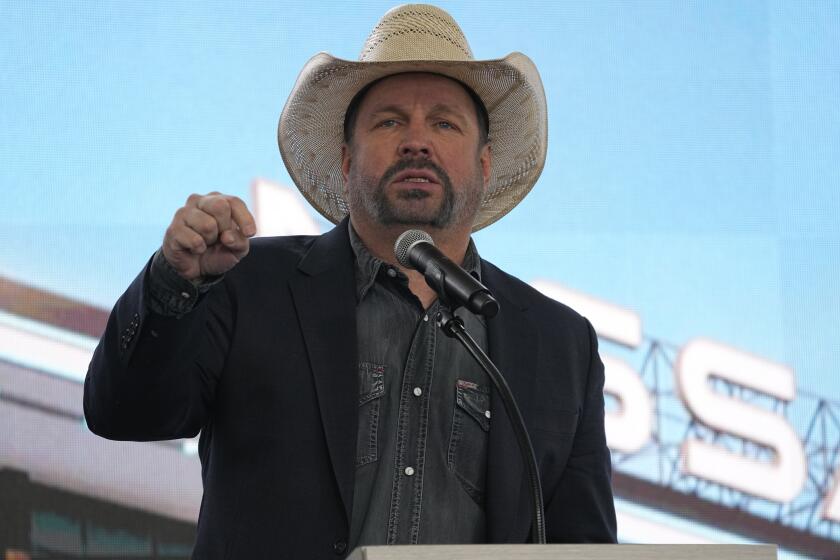The Rise and Fall of Grunge
1) Rock music incorporating elements of punk and heavy metal. Also the untidy working-class fashions typical of fans of grunge.
--Merriam-Webster dictionary, 1998 online edition.
Yes, grunge stuck around long enough to get into the dictionary, but the excitement and early promise of the ‘90s rock movement draws distant indeed as the decade comes to a close.
Though the music’s roots can be traced all the way back to the ‘60s, grunge’s mainstream presence began in the ‘90s when the Seattle scene captivated the rock world with its own label (Sub Pop), fashion (flannel shirts and torn jeans) and, most important, bands.
Scores of musicians contributed to grunge, but the pivotal moments involve the ascent and descent of three bands: Nirvana, Pearl Jam and Soundgarden.
1990: Soundgarden’s A&M; debut album, “Louder Than Love,” is released and goes to No. 108 on the national charts. Its follow-up, “Badmotorfinger,” will break into the Top 40 a year later.
1991: Nirvana’s “Nevermind” is released by Geffen Records. One track, “Smells Like Teen Spirit,” becomes the first anthem of ‘90s rock; the album eventually sells more than 7 million copies in the U.S. alone. . . . On Oct. 31, Pearl Jam becomes the first grunge band to get its name--but not a photo--on the cover of Rolling Stone.
1992: Nirvana’s name makes it to the cover of Rolling Stone on Feb. 20, but, ironically, the words “Smells Like Teen Spirit” are used as a teasing headline for a cover story on “Beverly Hills, 90210.” . . . Two months later, Nirvana has the Rolling Stone cover to itself, complete with a story calling Seattle the new Liverpool. . . . Pearl Jam, meanwhile, ups the commercial stakes by selling 9 million copies of its debut album “Ten.” . . . Grunge fashion--characterized by flannel shirts, Doc Martens or untied combat boots, knit caps, mismatched stripes and unkempt hair--is featured in Vogue magazine, and New York fashion designers Marc Jacobs, Anna Sui and Christian Francis Roth adopt the look for their fashion shows. Number of times grunge bands are named on the cover of Rolling Stone: five.
1993: Pearl Jam’s second album, “Vs.,” enters the national charts at No. 1, selling more than 950,000 copies the first week. It’s still a record for first-week sales in the ‘90s. . . . Number of times grunge bands are named on Rolling Stone covers: 10.
1994: Kurt Cobain is found dead of a self-inflicted gunshot wound on April 8, 1994. . . . Grunge comes to TV in the form of the hourlong teenage drama “My So-Called Life.” Number of grunge bands named on Rolling Stone covers: 18.
1995: Pearl Jam, feeling the pressure of being the focus of the entire grunge movement, takes steps--including sporadic touring and a low media profile--that undercut its commercial momentum. . . . In the spring, ABC cancels “My So-Called Life.” Number of grunge bands named on Rolling Stone covers: 10.
1996: Pearl Jam’s third album, “Vitalogy” enters at No. 1 and draws strong reviews, but sales drop to 5 million in the U.S. . . . Number of grunge bands named on Rolling Stone covers: 14.
1997: Soundgarden breaks up. Singer Chris Cornell plans a solo career. . . . Pearl Jam’s “No Code” album is widely praised, but sells only about 1.3 million. . . . Sensing a dying scene in Seattle, Rolling Stone asks in its March 20 issue: “Is electronic music the next alternative?” . . . Number of grunge bands named on Rolling Stone covers: three.
1998: Pearl Jam doesn’t recapture its early sales spark with its fifth album, “Yield,” but sales are strong for the band’s most ambitious tour ever. . . . Interest is building for Cornell’s solo debut. . . . Although grunge is dead, some of its most talented figures will continue to contribute to rock’s future.
More to Read
The biggest entertainment stories
Get our big stories about Hollywood, film, television, music, arts, culture and more right in your inbox as soon as they publish.
You may occasionally receive promotional content from the Los Angeles Times.










